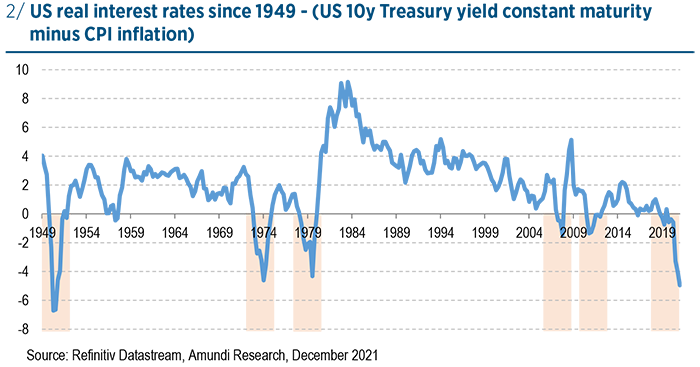A number of scheduled country-level elections will carry moderate uncertainty. However, while they could bring new faces, they are unlikely to result in abrupt changes from the current generally pro-European and market-friendly stance of large EU countries’ governments.
Key developments on this front have already happened in 2021, first and foremost through:
- 1. The formation of the cabinet of Mario Draghi (an ex-ECB chief) in February in Italy, seen as instrumental in retaining the trust of both the markets and Northern European countries that Italy will make good use of the European NGEU Recovery Fund and deliver the expected reforms.
- 2.The German general election , in September, which yielded a tripartite government (Social Democrats + Greens + the pro free-market FDP) seen, at the very margin, as more conducive to further European integration than the previous (Merkel) government.
H1 2022 will also see notable political events in Italy and France.
The Italian presidential election (through parliamentary votes) scheduled for January may cause some noise, yet probably no radical change. It is unclear at this stage whether a majority can be reached through a pre-agreement among political parties, to smoothly approve a successor to current President Sergio Mattarella. While Draghi himself could probably secure the necessary votes to become the next president (indeed, he recently hinted that he would accept the position), his change of role from prime minister would require the formation of a new government, with the risk that it could be weak and possibly lead to snap general elections before the scheduled June 2023 ballot. However, most Italian political forces will probably favour continuity in a period that is critical for the recovery and for the way the country is viewed in Europe, with the most probable scenarios being: 1/ Draghi becomes president while agreeing with most parties on a successor prime minister to continue to steer the country in the same direction. 2/ parties finally agree on a new president (or the re-election of Mattarella, should he drop his current rejection of another term of office), leaving Draghi in his current role. Both these scenarios would be regarded as positive from a market/ European policies perspective.
The French electoral cycle (presidential elections on April 10 and 24, and legislative elections on June 12 and 19) is also unlikely to lead to any radical change. By far the two most likely outcomes are a re-election of Emmanuel Macron or his defeat by mainstream rightwinger Valérie Pécresse, with, in both cases, the legislative election yielding a centre-right or moderate-right majority or coalition. While the details of Macron’s and Pécresse’s policies may have different effects on the French economy over the long term, both will be seen (just slightly more in the case of Macron) as strongly committed to the European project. Some moderate market stress is possible during the election process, as far-right parties are strong in polls and one of them could possibly make it to the second round of the presidential ballot, whereas left-wing parties are very weak and divided. However, it is very unlikely that either of the far-right parties could win the second turn. Moreover, the far right has removed Frexit from its agenda, meaning that the risk it carries from a market perspective is less than in 2017.
Another event to watch will be the snap general election in Portugal, on January 30. This election was called after the budget proposed by the Socialist minority government was rejected by Parliament in October, which has made it more difficult, among other things, to use the NGEU funds. The latest polls show Prime Minister António Costa’s Socialist Party in first position, although short of a majority, and a strong showing by the far right (until recently, not a major political force in the country). However, given the country’s strong track record in terms of implementing EU-recommended reforms (that were not reversed despite the Socialist party’s parliamentary alliance with the far-left), and the generally pro-European stance of most parties, this election is unlikely to generate a lot of market stress.
In the non-Euro EU, the Hungarian general election (with the date to be confirmed in April or May) may bring significant change, as Prime Minister Viktor Orbán, whose policies have often conflicted with those of the EU majority, is currently meeting a strong challenge in polls from the pro-European United Opposition, led by moderate right-winger Péter Márki-Zay.



